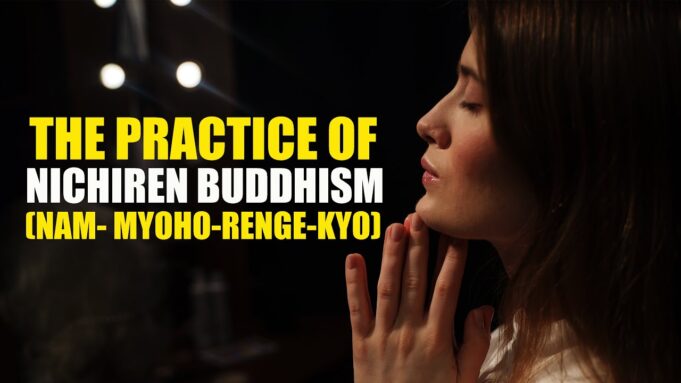Nichiren Buddhism has three components – faith, practice and study – and the practice is further broken down into two parts – practice for yourself and practice for others. Practice for others is simply talking to other people about this Buddhism and telling them you think its good and beneficial to your life. Sometimes in the media or online this can be portrayed as cult-like behaviour, but it’s no different to recommending a great movie you’ve seen or a new product you’ve loved. Also, if your experience of this philosophy or religion wasn’t great you wouldn’t recommend it to others or you would give them a negative impression. We don’t need to stand on a soapbox shouting about it or go door to door pestering people.
It’s just something that may naturally come up in conversation with friends, neighbours and co-workers.
Practice for yourself. as we shared in other videos, chanting Nam-myoho-renge-kyo, to awaken your Buddha nature and tap into the mystic law of the universe. You can chant this any time you feel like it, but it also forms part of our morning and evening routine. Twice a day we recite extracts from two of the key chapters of the Lotus Sutra, which contain the core message of our faith, chant Nam-myoho-renge-kyo and give thanks and appreciation in prayers.
The two chapters we read from are, Chapter 2- Expedient Means Chapter, and Chapter-16: Life Span Chapter”. Nichiren Daishonin, didn’t leave any hard and fast rules about daily practice other than recite part of these two chapters daily and chant nam-myoho-renge-kyo, but within the Nichiren Buddhism and its various Nichiren Buddhist groups, the length of the extracts recited has become shortened to make it more manageable as part of your daily life. and prayers have been introduced to focus your thinking and determination and to show gratitude and appreciation for the practice.
As we know, it is always good to have physical copy of gongyo book during the recitation of gongyo, as it helps us to focus more on the words of the sutra but it is not always easy to carry around physical gongyo book therefore We would like to introduce our brand new digital gongyo book: The Gongyo Liturgy of Nichiren buddhism, you can get the kindle version as well as the paperback version from the amazon marketplace, check out the links in the description below. The General Gongyo book contains the words needed to recite the chapters from the Lotus Sutra and also guidelines for the prayers, and it mentions that the wording of the prayers is there as a guideline, and that it is the sincerity and heartfelt thoughts that are more important than the specific wording.
The 3 basic prayers are.
First Prayer:
Appreciation to the functions in life and the environment which support us because of our practice, Appreciation to the Dai-Gohonzon, Nichiren Daishonin and his first successor Nikko Shonin. These three represent the three treasures of Buddhism (the mystic Law, the Buddha and the community of believers) and you can also offer gratitude and appreciation to the Original Eternal Buddha Shakyamuni, and to Kumarajjiva, who translated the Lotus Sutra. to show the continuation of this buddhism being passed on to future generations.
2nd Prayer:
This prayer shows our appreciation and desire for the spread of our faith throughout society. We focus on achieving kosen-rufu – a time when everyone is awakened to their Buddha nature and the achievement of peace throughout the world. We also pray for the eternal development of the organisation (the group we belong to which can bring about this positive change in people’s lives) and also show appreciation to our mentor or priest for their dedication to teaching and introducing others to this Buddhism.
3rd prayer: This prayer is our own personal prayers and determinations and is in 3 parts.
1. A prayer to bring forth our Buddhahood, change our karma, carry out our self-improvement and fulfil our wishes. You can include thanks to other people supporting you in your life, for the safety and well-being of friends and family, for the achievement of your own personal goals (new job, house, etc.).
2. A prayer to all of those who have passed away and our deceased relatives. For many people this is a great source of comfort especially after someone has recently died. Twice a day we are giving thanks and cherishing the memory of those we have loved and continue to love.
3. Finally, we pray for peace throughout the world and the happiness of all humanity.







